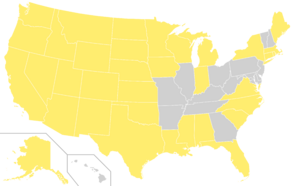Tribe (Native American) facts for kids
In the United States, an American Indian tribe (also called a Native American tribe or Tribal nation) is a group of Indigenous people. These groups have a shared history, culture, and often a common language. Today, many tribes are linked to specific lands called reservations.
A "federally recognized Indian tribe" is a special legal term in the U.S. It means the tribe has an official relationship with the U.S. federal government.
When a Native American tribe is federally recognized, it has "tribal sovereignty." This means they have the right to govern themselves. They are like a "domestic dependent, sovereign nation." This relationship is similar to how a state works with the U.S. government, but also like how one country relates to another.
Many words used to describe Indigenous peoples in the U.S. can be confusing. However, these terms often have specific legal meanings that are important to understand.
Contents
What Does "Tribe" Mean Legally?
Understanding Federally Recognized Tribes
For some purposes, the U.S. government defines a "tribe" as one that is federally recognized. This recognition comes from the Bureau of Indian Affairs (BIA). It also includes Alaska Native tribes formed under the Alaska Native Claims Settlement Act.
These groups are called "federally recognized tribes." They can get special programs and services from the United States government. The BIA is part of the U.S. Department of the Interior. It helps tribes by issuing documents that show a person's Native American heritage. Tribes often use these documents for membership. Federally recognized tribes are unique governments. They are not just parts of state or local governments.
Tribes Recognized by States or Self-Identified
Not all tribes are federally recognized. Some, like the United Houma Nation, are recognized only by their state. Each state has its own rules for this.
Other groups identify themselves as Native American tribes for different reasons. Some might be scattered groups that no longer exist as an organized nation. Others might be working through the official recognition process. Some may have lost their recognition in the past. There are also groups of people who are not Native American but try to get recognized as a tribe.
How Tribes Can Combine
Sometimes, several tribes have joined together to form one larger, federally recognized tribe. This often happened when the U.S. government assigned tribes to reservations.
For example, in 1872, 19 different tribes combined. They formed the Colville Confederated Tribes. Today, this is one single federally recognized tribe. They live on the Colville Indian Reservation in Washington state.
Well-Known Native American Tribes
Here are some of the many well-known tribes:


